The Terminal
The Terminal is a video-installation that analyses the expansion of budget airlines
from the ground. How did airports change, reorganize, and build anew to satisfy the Low-Cost Carriers (LCC)
requests? Are
there common patterns in the interior design, structure, management, and organization of such
facilities in the world? Is there any infringement of law for the land use, especially regarding the
inhabited areas in the surroundings? Can the expansion of low-cost carriers be monitored,
or are budget airlines playing Risk with states and local regions?
These the initial questions that were furthere developed in a few months of research and design. The resulting
installation was part of GEO-DESIGN: Budget Airlines exhibition, the fifth chapter of the ongoing exhibition
series curated by Martina Muzi.
On show at Van Abbemuseum Eindhoven (9 October - 14 November 2021).
geodesign.online ↗
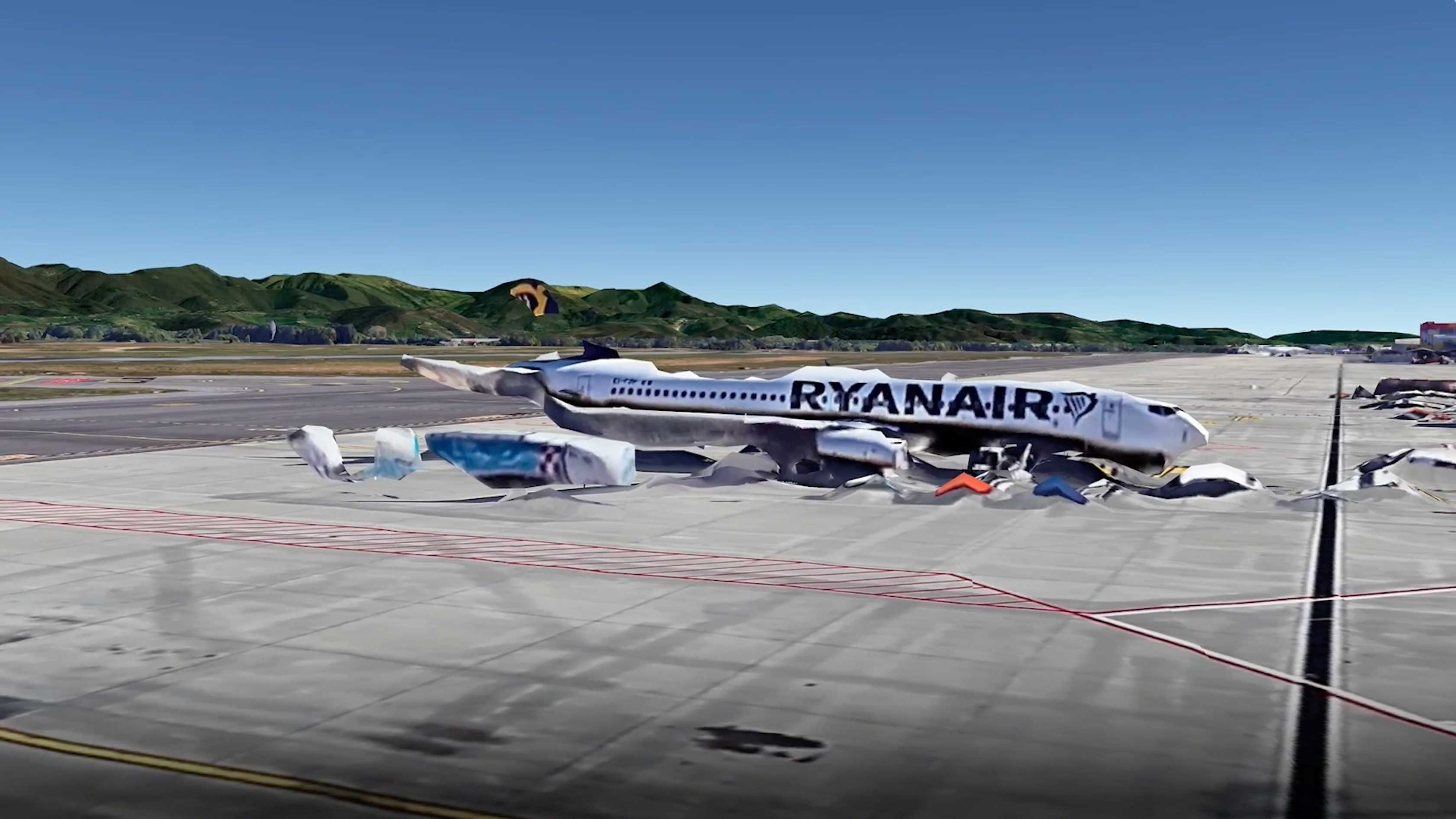
EXHIBITION TEXT (edited by Nadine Botha)
The history of budget airlines is the history of the designed austerity of airport
terminals. Reducing the amount of time that an aircraft is grounded is essential to the budget
airline business model as it reduces airport costs and allows more flights per day. In addition to
speeding up the process of disembarking passengers, cleaning the aircraft, and embarking passengers,
this includes reducing the time and costs associated with jet bridges, ramp operators, airport crew
and liaisons with the gate.
Over the past two decades, airports have changed and built dedicated terminals to meet these budget
airline requirements. Low-cost design, lack of airbridges, thermal cooling instead of air
conditioning, offices without fixtures, minimum services and affordable shops: budget terminals are
less expensive than regular ones, but they have not been designed with flexibility. In 2020,
low-cost carriers accounted for about 35% of the world’s total seat capacity, but if travel trends
change, or the agreements between the air carriers and the airports cease, airports risk becoming
unused buildings.
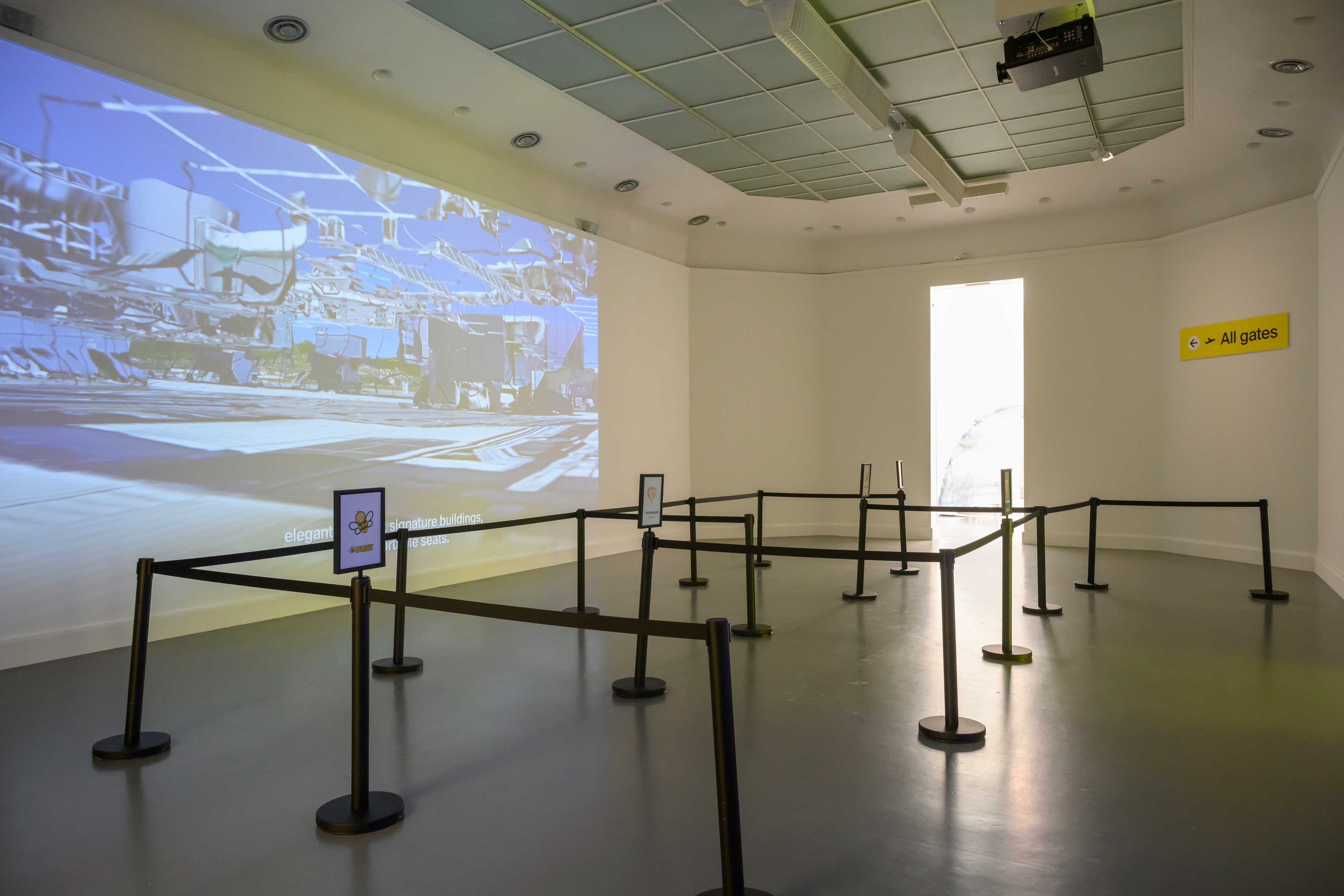
Installation view / Photo by Peter Cox
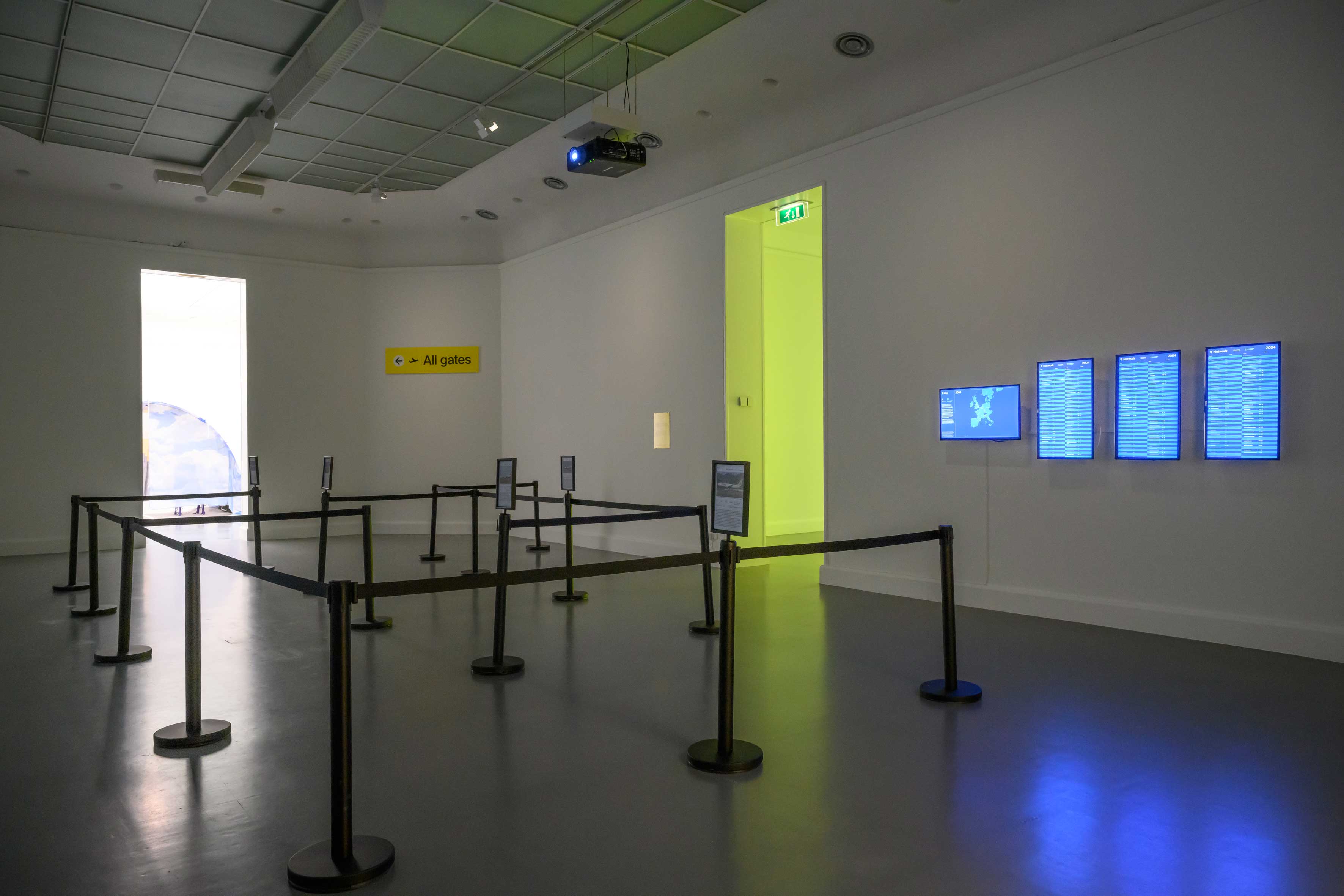
The video shown in the windows of this terminal-inspired installation depicts this evolution.
Based
on Ryanair’s 35 years of activity, the timetable shows its network of destinations and air bases.
Information about its subsidiaries runs along the rope barriers.
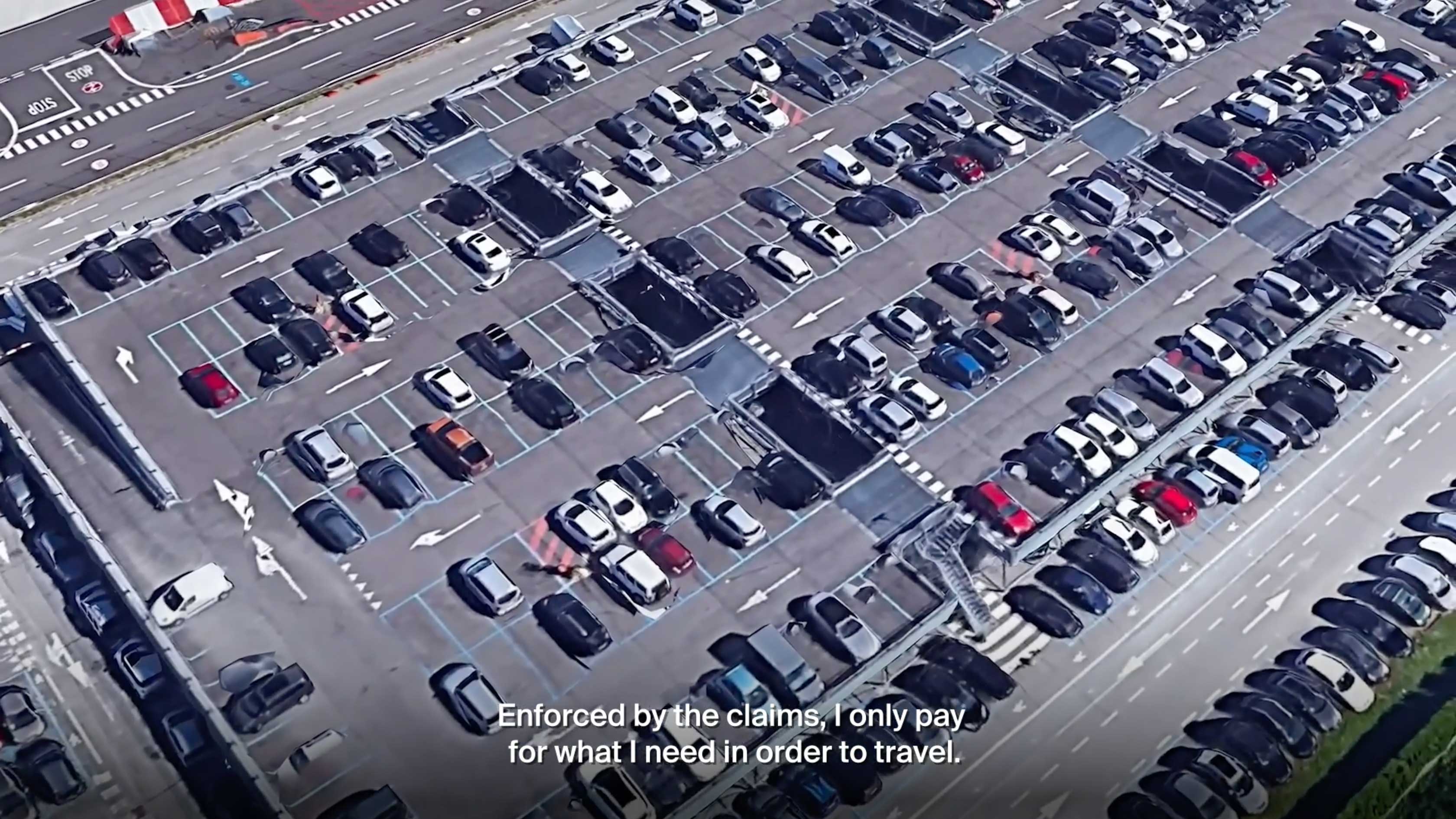
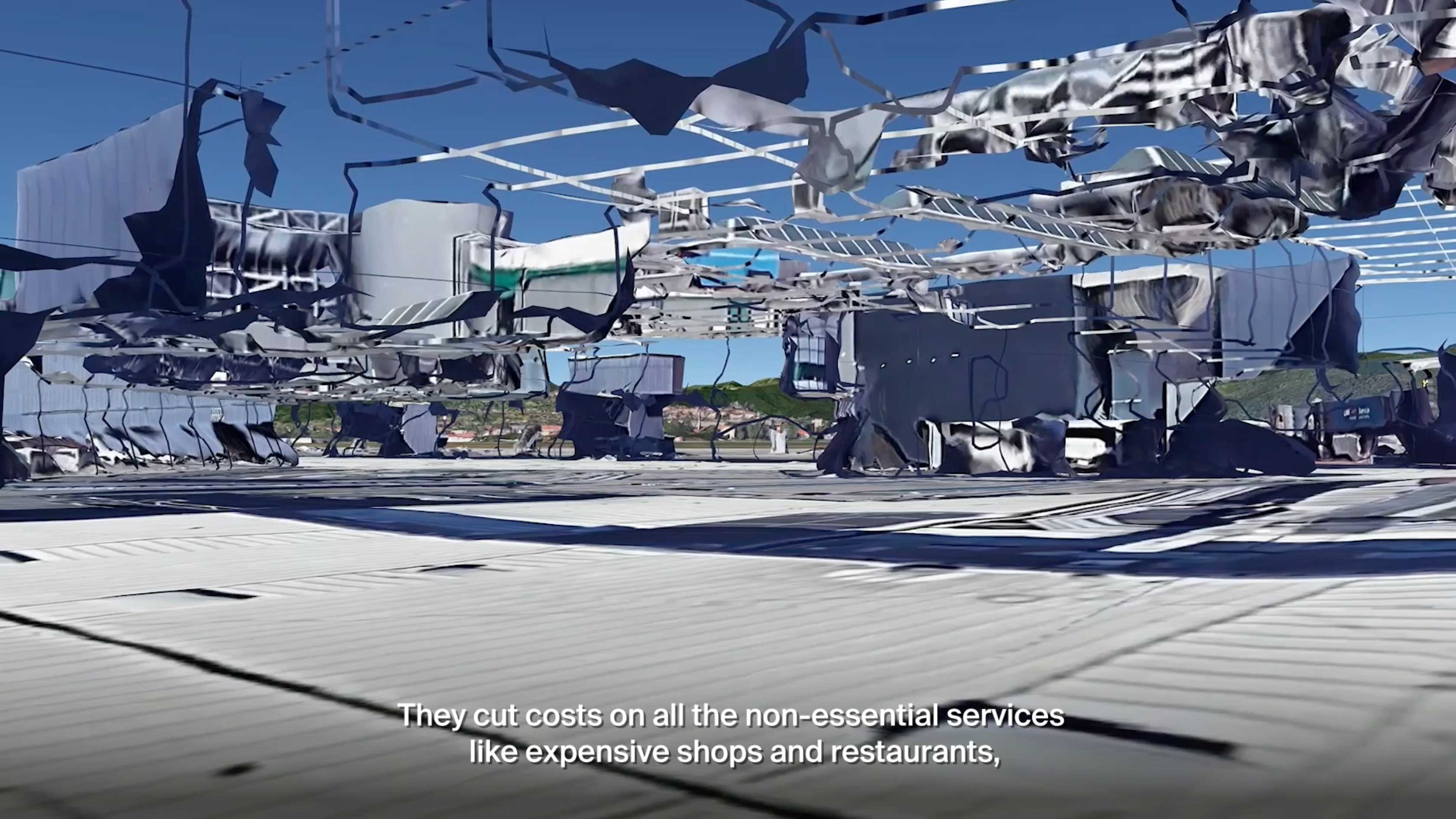
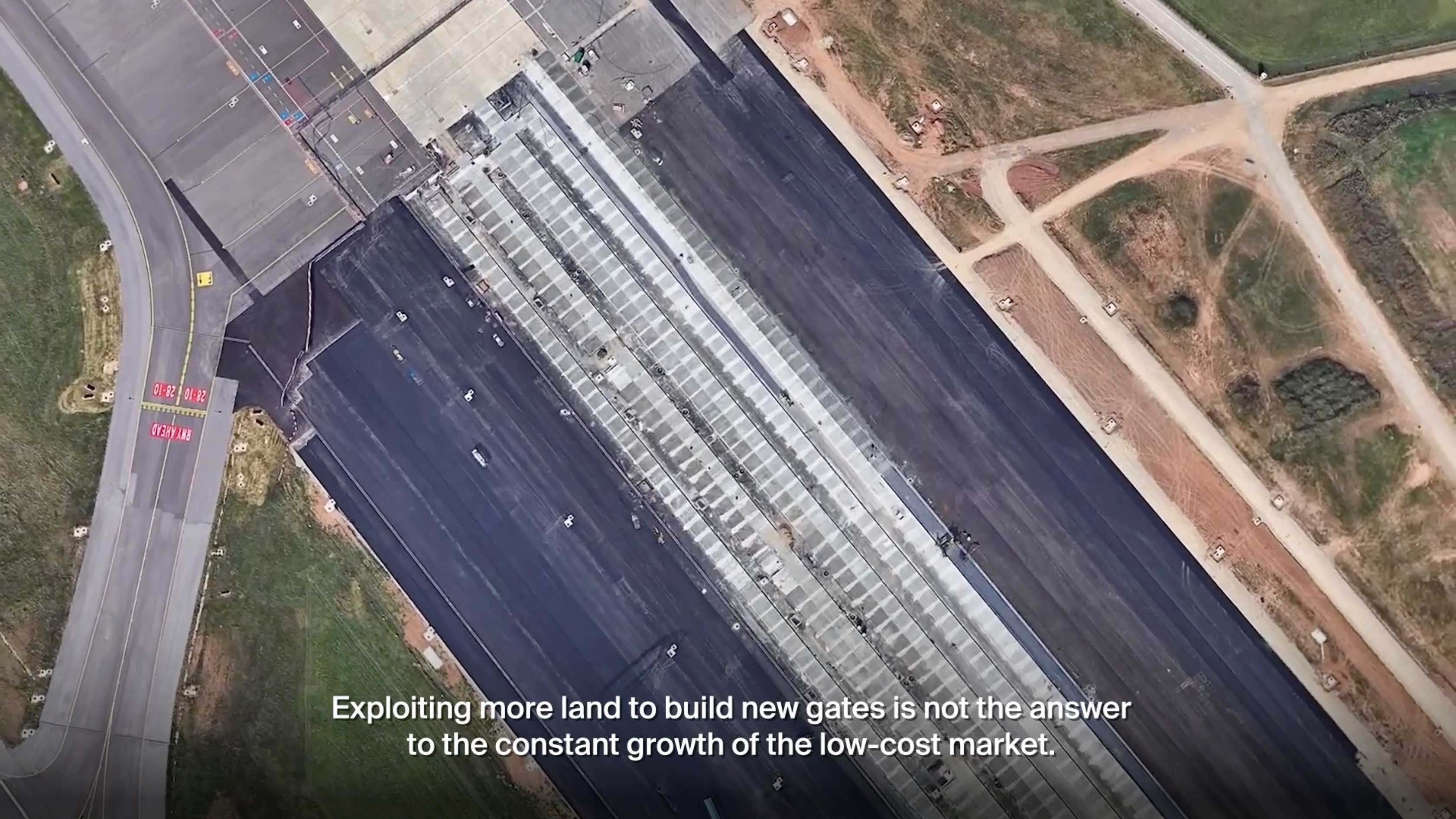
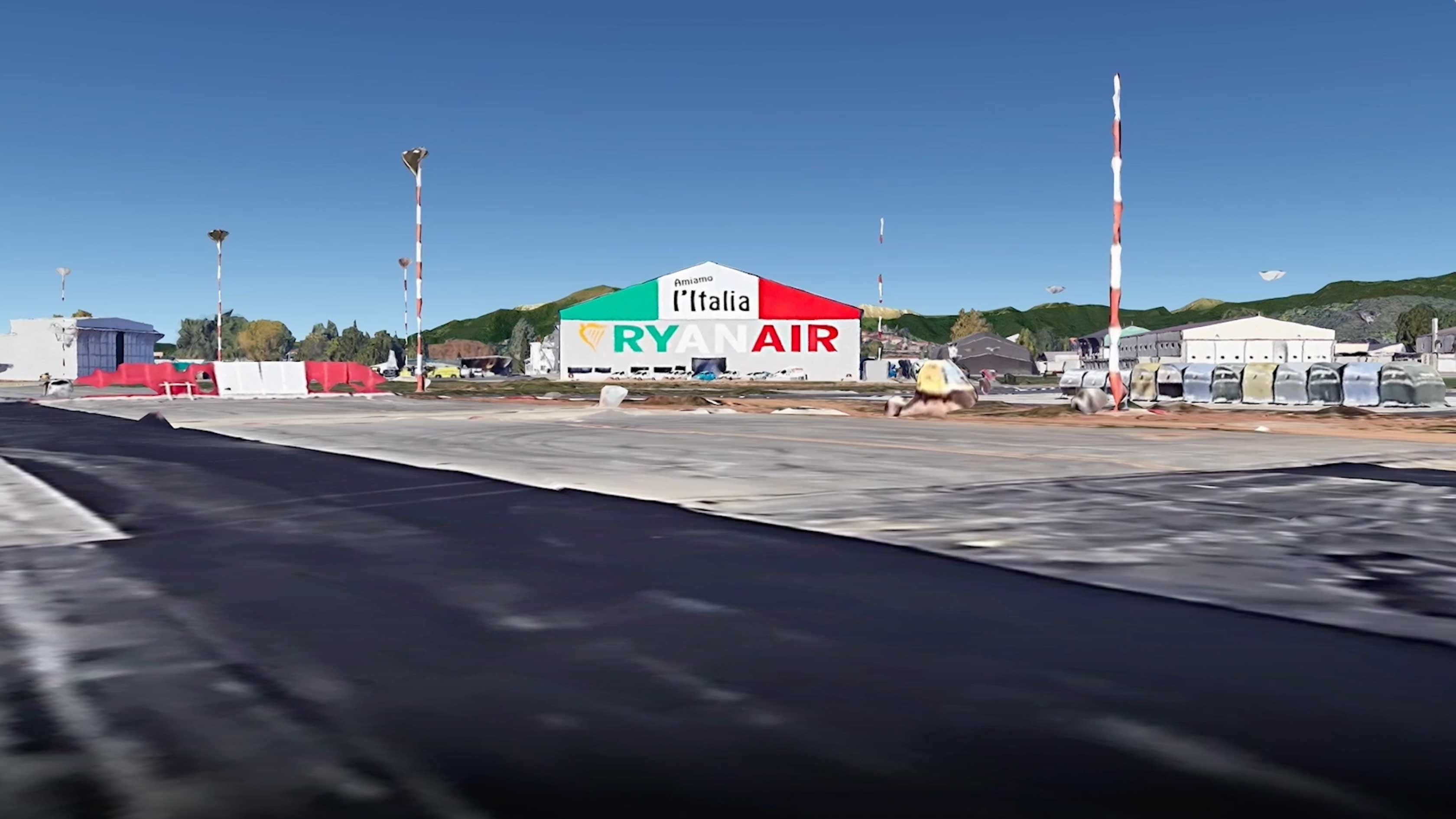
The 35 years of Ryanair's operational activity are visualized through its network of
destinations. In the form of airport timetables, three screens collect the 274 terminals where the carrier
lands (or has landed in the past). From the first three locations in 1985 to 229 in 2021: a constant expansion
that increased in the past two decades. The fourth screen geolocates the airports served by Ryanair by
differentiating between bases (airport where the airline based its aircraft) or connection (one of the many
destinations part of the network).
Data available on this spreadsheet.
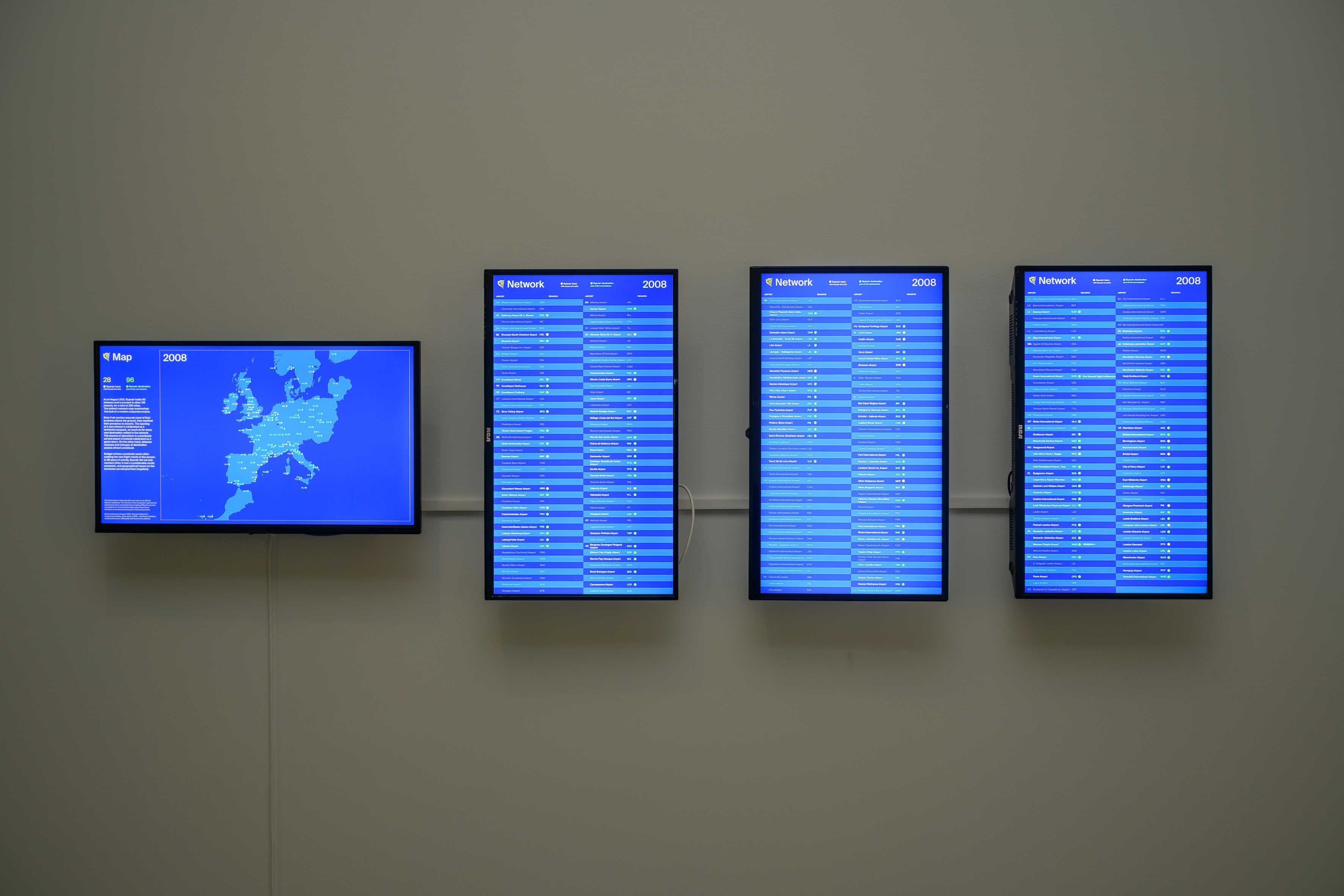
Photo by Peter Cox
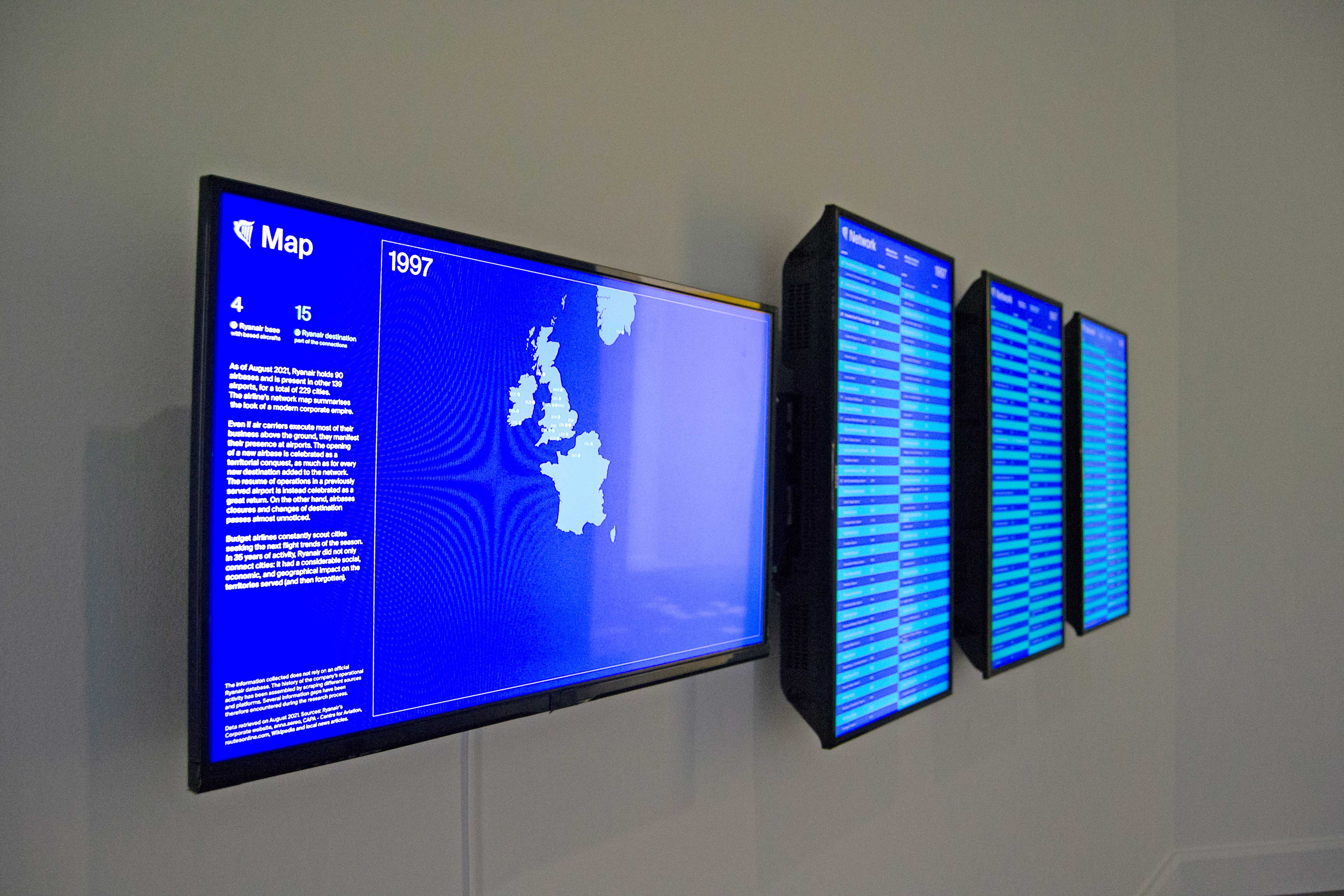
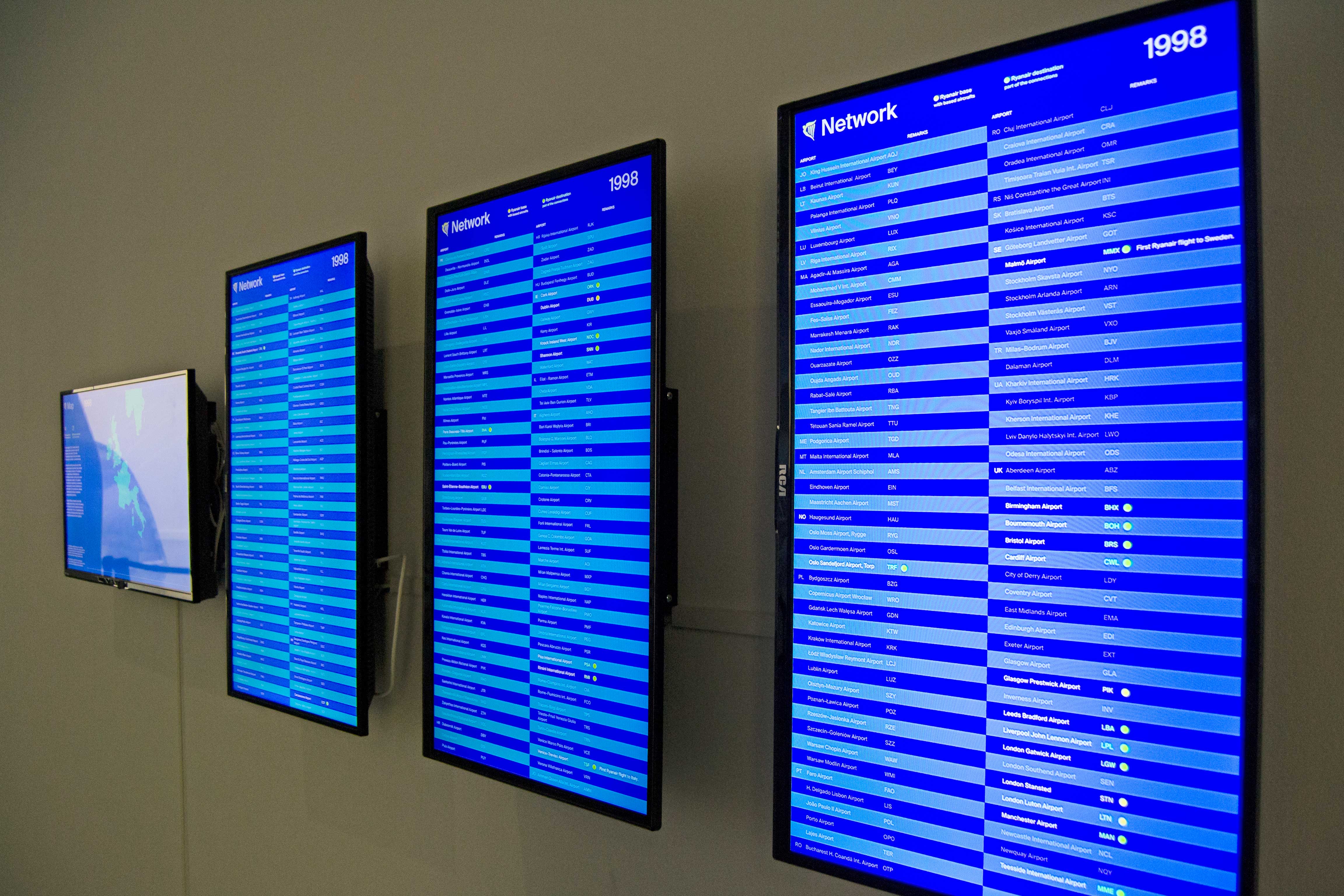
The airline’s network map summarises the look of a modern corporate empire. Even if air carriers execute most of their business above the ground, they manifest their presence at airports. The opening of a new airbase is celebrated as a territorial conquest, as much as for every new destination added to the network. The resume of operations in a previously served airport is instead celebrated as a great return. On the other hand, airbases closures and changes of destination passes almost unnoticed.
Ryanair Network Map - Short version
Ryanair Network Table - Short version
Budget airlines constantly scout cities seeking the next flight trends of the season. In 35 years of activity, Ryanair did not only connect cities: it had a considerable social, economic, and geographical impact on the territories served (and then forgotten).
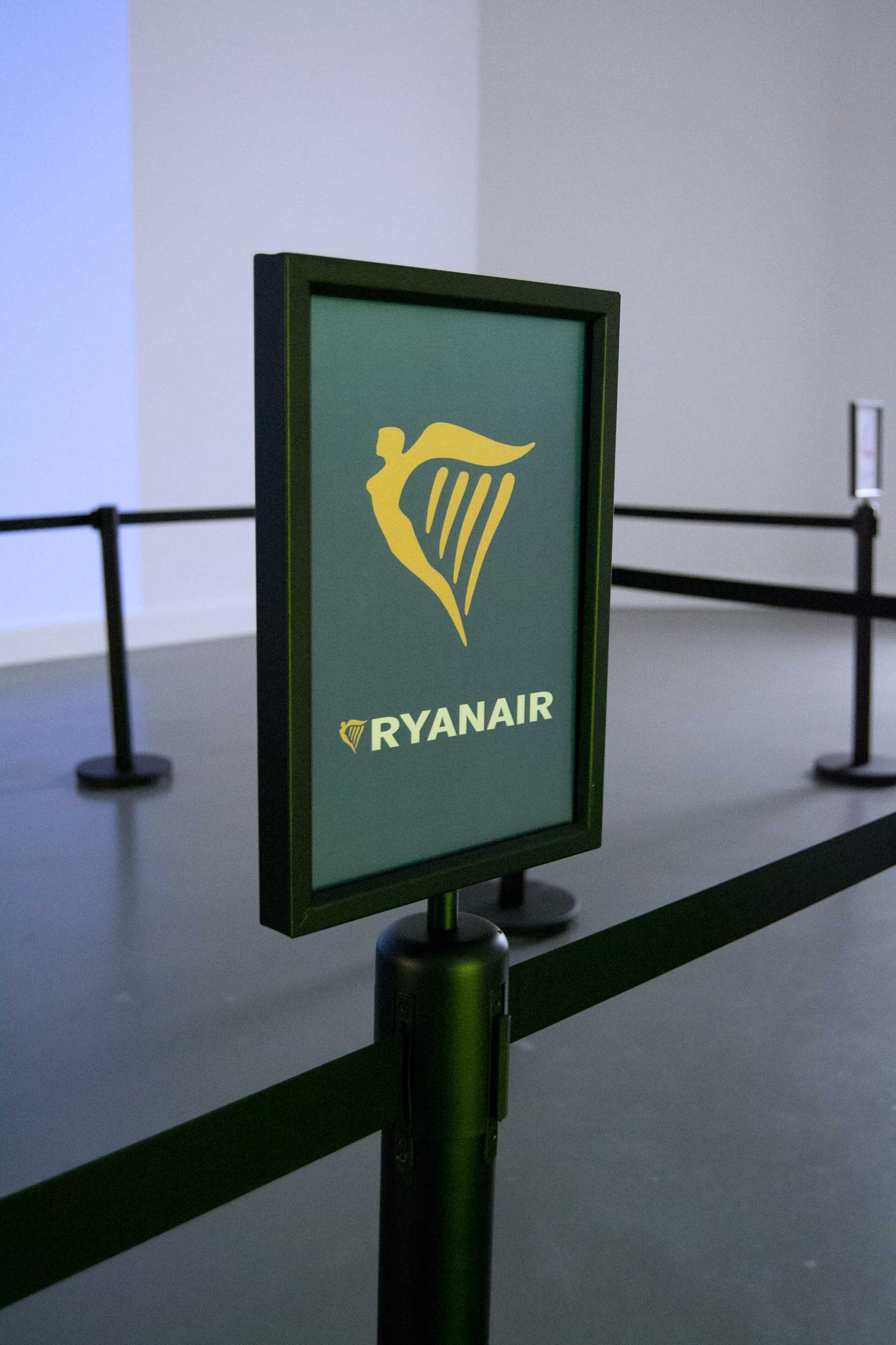
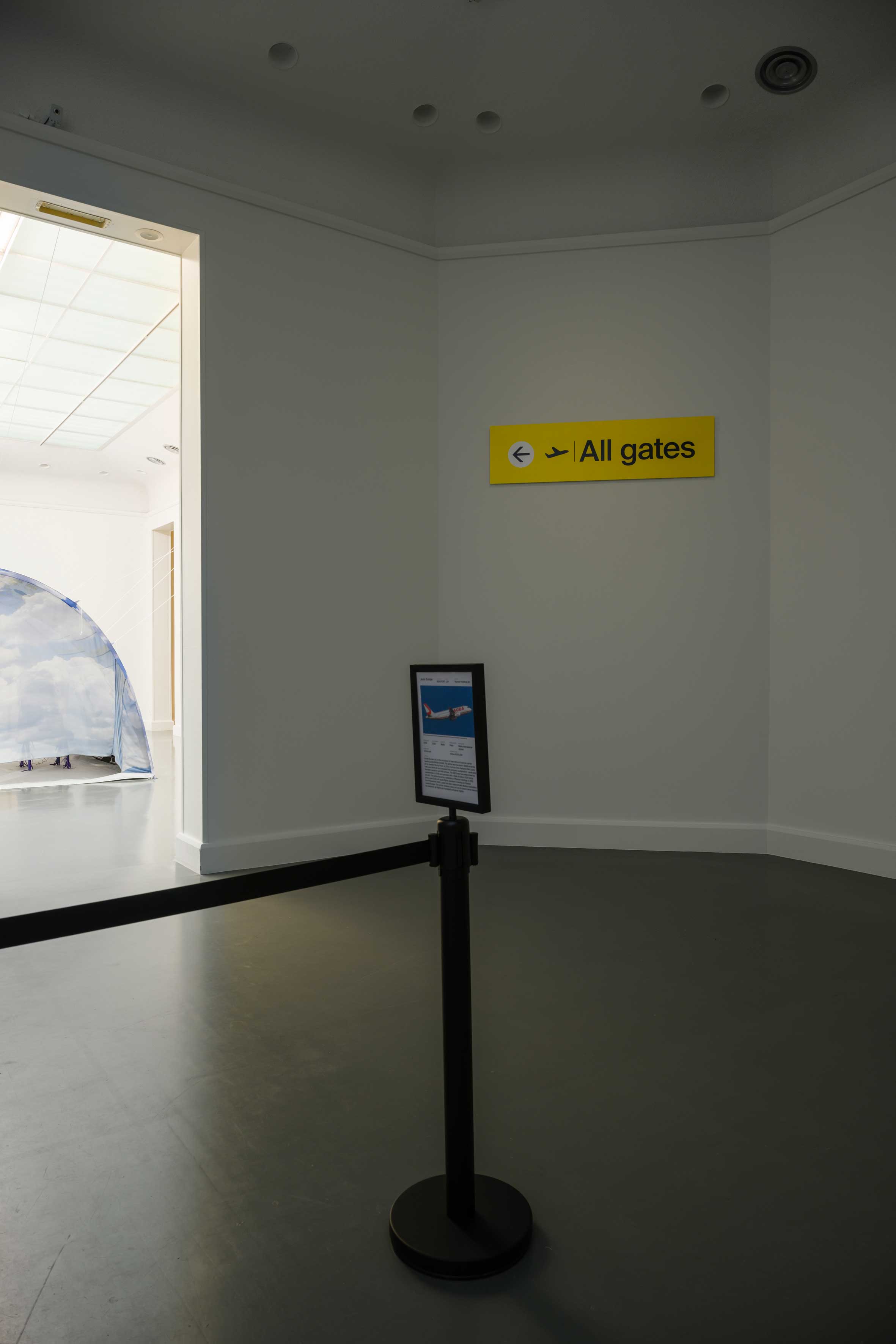
Ryanair was founded in 1984 and entered in function in 1985. One year later, Ryanair UK was registered in London as a limited company. In 2018, to prevent a possible no-deal Brexit obtained an Air Operator's Certificate from the Civil Aviation Authority to fly within UK borders. In the same year, Ryanair started flying a Polish carrier named Buzz (previously Ryanair Sun), which was acquired in 2003 from KLM. Again in 2018, the Austrian airline Lauda (founded by the Formula One champion Niki Lauda) joined Ryanair Holdings; since 2020, it's registered in Malta. Ryanair operates in Malta since 2019, with Malta Air, an airline born as a joint venture with the government of Malta. Like business corporations, low-cost carriers can increase their dominance by slowly taking over national or local airlines.
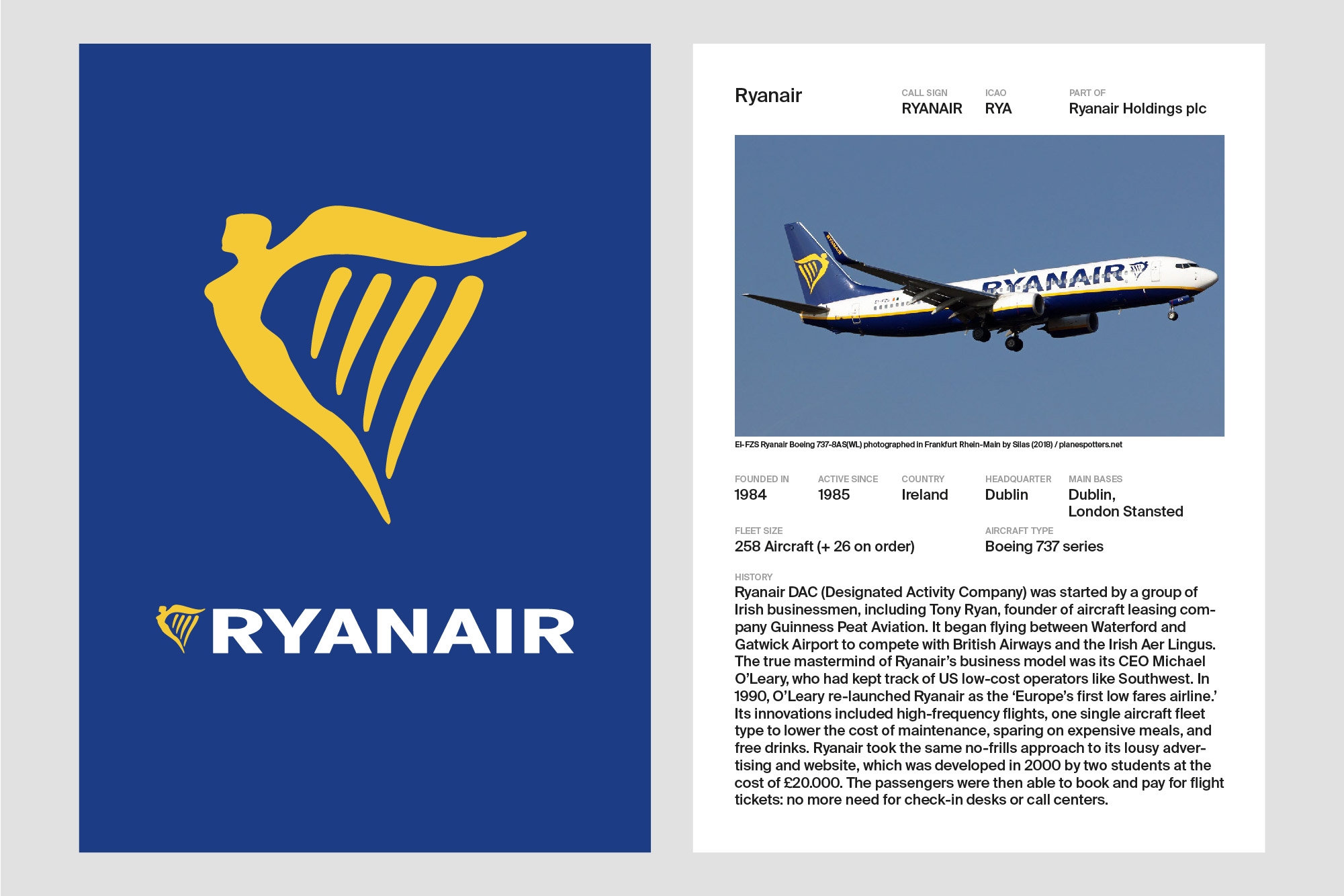
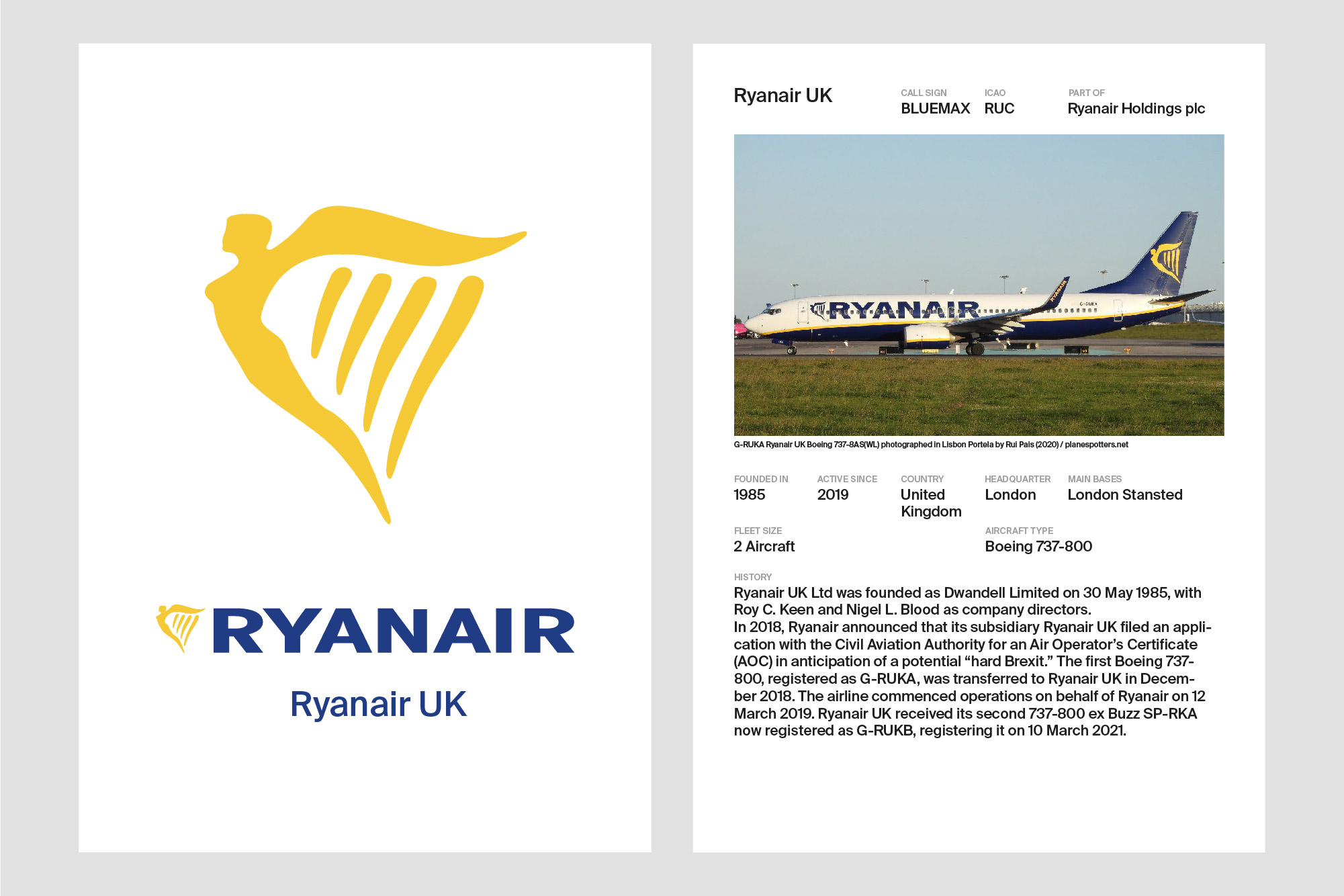
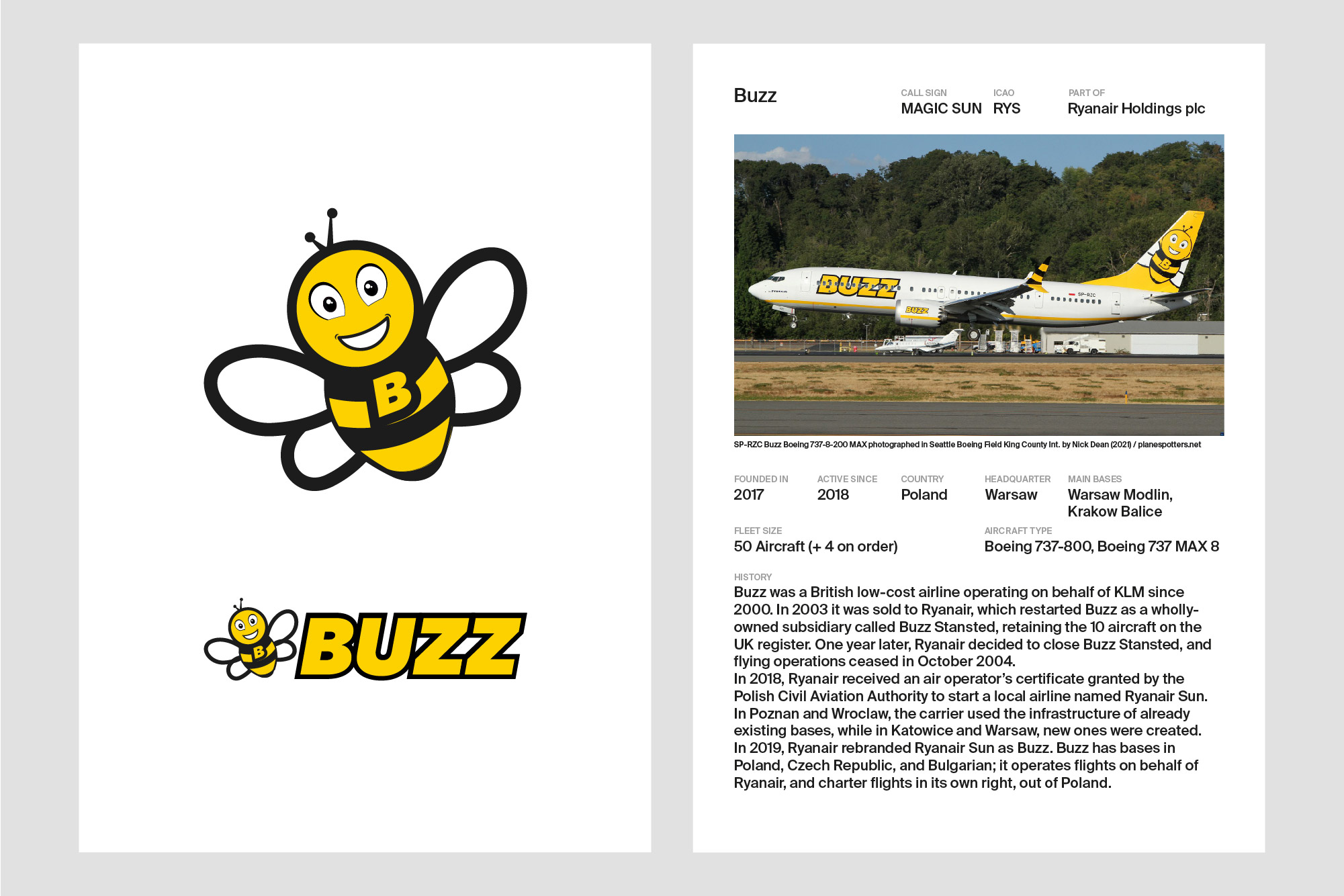
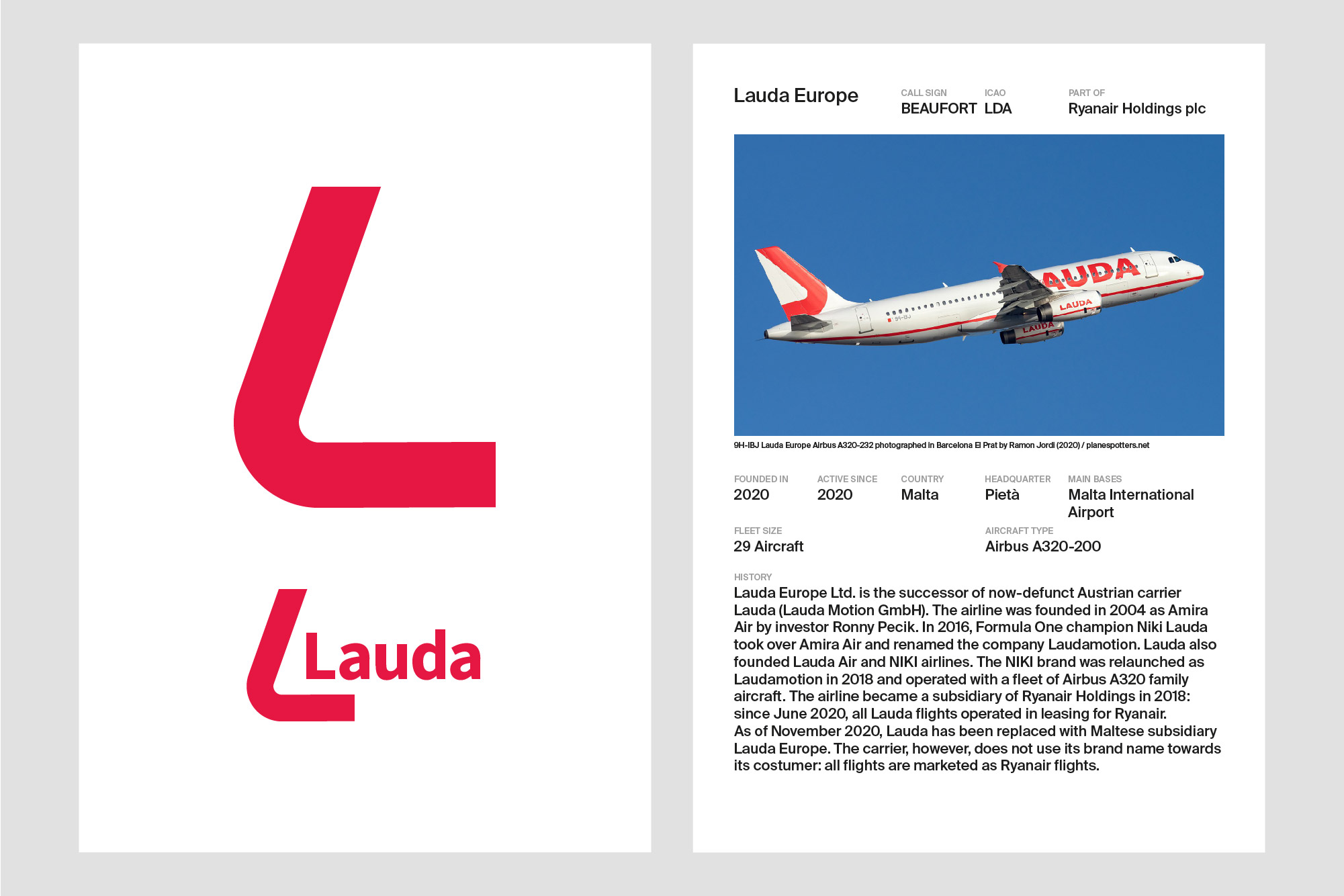
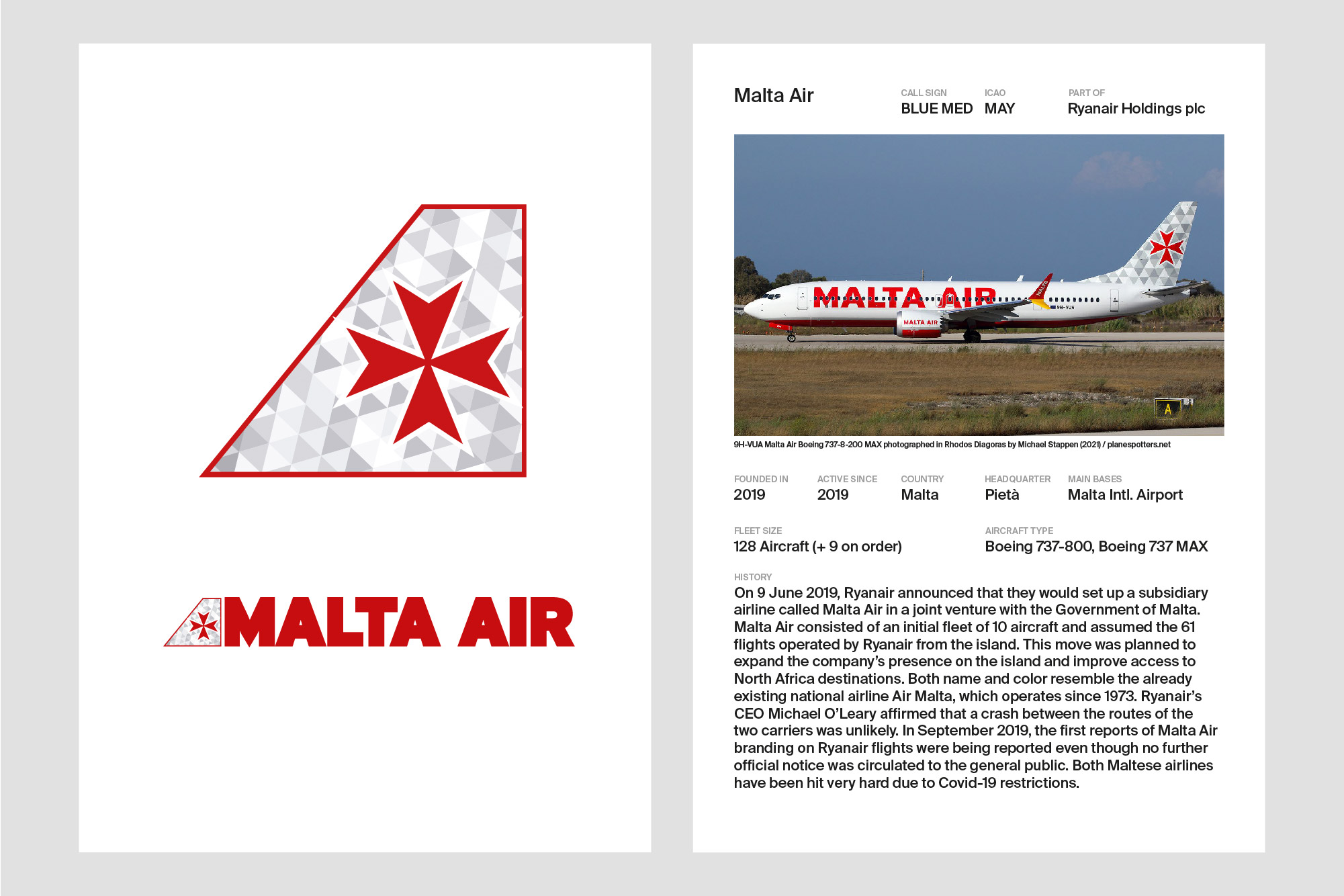
Information about the five Ryanair subsidiaries are shown thorugh the shape of informational sign holders, positioned along the rope barriers.

The information collected does not rely on an official Ryanair database. The history of the company’s
operational activity has been assembled by scraping different sources and platforms. Several information
gaps have been therefore encountered during the research process.
Data retrieved on August 2021. Sources: Ryanair’s Corporate website, anna.aereo, CAPA - Centre for Aviation,
routesonline.com, Wikipedia and local news articles.
Exhibition
GEO-DESIGN: Budget Airlines. We Are All The Jet Set*
8 October - 14 November 2021
Van Abbemuseum Eindhoven
geodesign.online